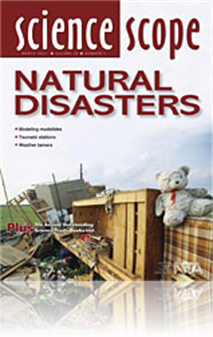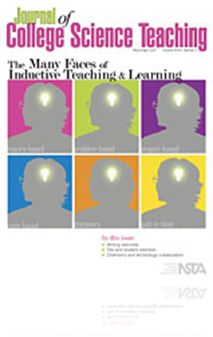All Resources
Journal Article
Outstanding Science Trade Books for Students K—12: Books Published in 2006
Apples and oranges … and lychees and loquats—how can one compare? That’s the challenge when a team of NSTA’s best science educators attempt to select the best of each year’s science trade books. It’s been 34 years since NSTA joined forces...
Journal Article
Idea Bank: A 50-Cent Analytical Spectroscope
“How do we know all that we know about the stars, since they are so far away and no one from Earth has ever visited them?” A fair question to be sure. While astronomers believe they have decent estimates of the mass, temperature, size, and compo...
Journal Article
Librarians instruct students where to find information, but rarely demonstrate its management, while faculty have difficulty incorporating real-time laboratory experience with library research. This paper focuses on the development of a hands-on biol...
Journal Article
Science 101: What exactly is energy?
It isn’t an easy task to explain what energy is. For that simple answer, let’s head to your average science textbook and retrieve the following: “Energy is the ability to do work.” Okay, but what does that mean? What do we mean by work? Even ...
Journal Article
Scope on the Skies: Total lunar eclipse
On March 3, 2007, the Moon will be at its descending node, crossing the Earth’s orbital plane, moving southward. The Moon will also be at 100% illumination, or at full Moon, during the node crossing. These are the requirements for a lunar eclipse t...
Journal Article
Scientific Discovery for <em> All </em>
The scientific discovery process comes alive for 70 minority students each year at Uniondale High School in New York where students have won top awards for “in-house” projects. Students develop projects from an original idea that interests them, ...
Journal Article
Science Sampler: Earthweek in the classroom—Students monitoring a dynamic planet
Exploding frogs in Germany, new volcanic islands emerging in the Pacific Ocean, Avian Influenza spreading worldwide—these are just a few of the stories in Earthweek, an online log of natural events. The weekly report chronicles events around the w...
Journal Article
Outstanding Science Trade Books for Students K-12: Books Published in 2006
Apples and oranges… and lychees and loquats—how can one compare? That’s the challenge when a team of NSTA’s best science educators attempt to select the best of each year’s science trade books. It’s been 34 years since NSTA joined forces ...
Journal Article
The Journal of College Science Teaching is one of four journals published by the National Science Teachers Association. Each of the journals serves the educators working at a different level of education. JCST shares some of its processes with these ...
Journal Article
Science Sampler: Students learn best by teaching
Traditionally, science fair projects allow students to share their personal investigations about nature. In a science fair presentation, a student typically lectures, pointing out observations, data, analysis, and conclusions to a disinterested audie...
Journal Article
Using Clay Models to Understand Volcanic Mudflows
Gravity is a subtle but ubiquitous force that influences nearly all geologic processes from the formation of ores to the flow of glaciers and rivers. Gravity also determines the path some materials take as they flow down volcanoes. Lava flows, mudflo...
Journal Article
Secret Message Science Goggles
Imagine looking at a picture of a brightly colored frog. Put on your color filter science goggles, and the frog is gone! Imagine writing a message that can only be read with your special science goggles. Now imagine your classroom—20 goggled faces ...
Journal Article
Point of View: Seen Any Red Pandas Lately?
We humans are pattern finders and explanation seekers. Fortunately, many of our seemingly reasonable patterns and explanations have not withstood the test of time. For example, we no longer believe that volcanic eruptions occur as a result of the god...
Journal Article
In this month’s Ask the Experts column, the following question is addressed: “Do the cells in a placenta have DNA in them and if so, whose DNA does it match, the mother or the fetus?”...






